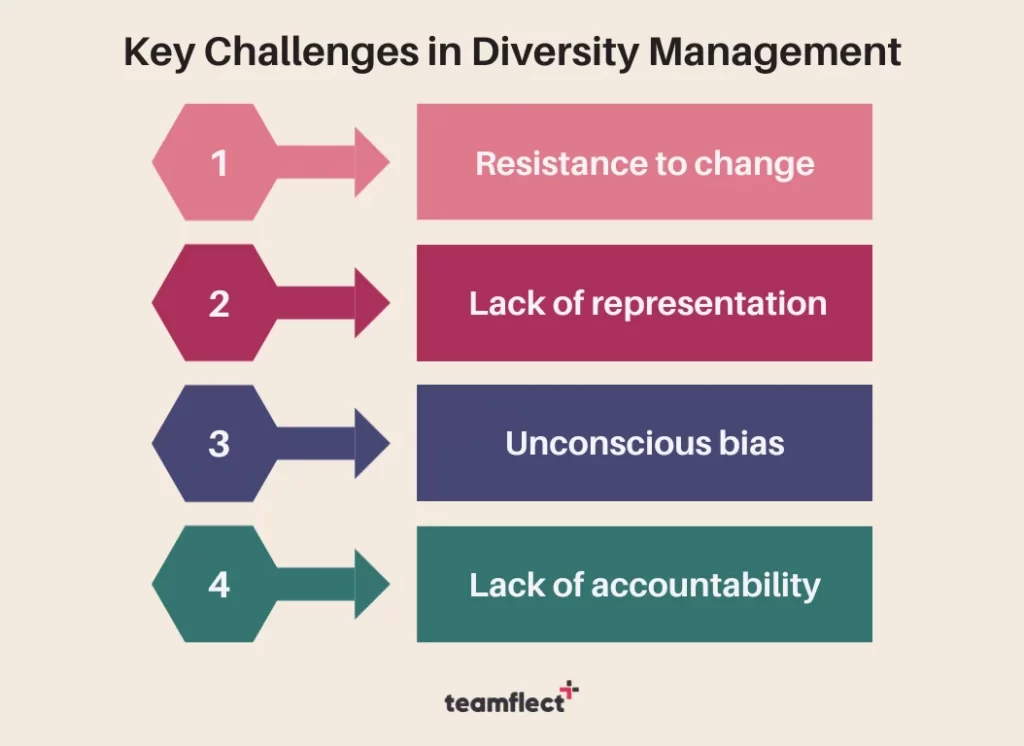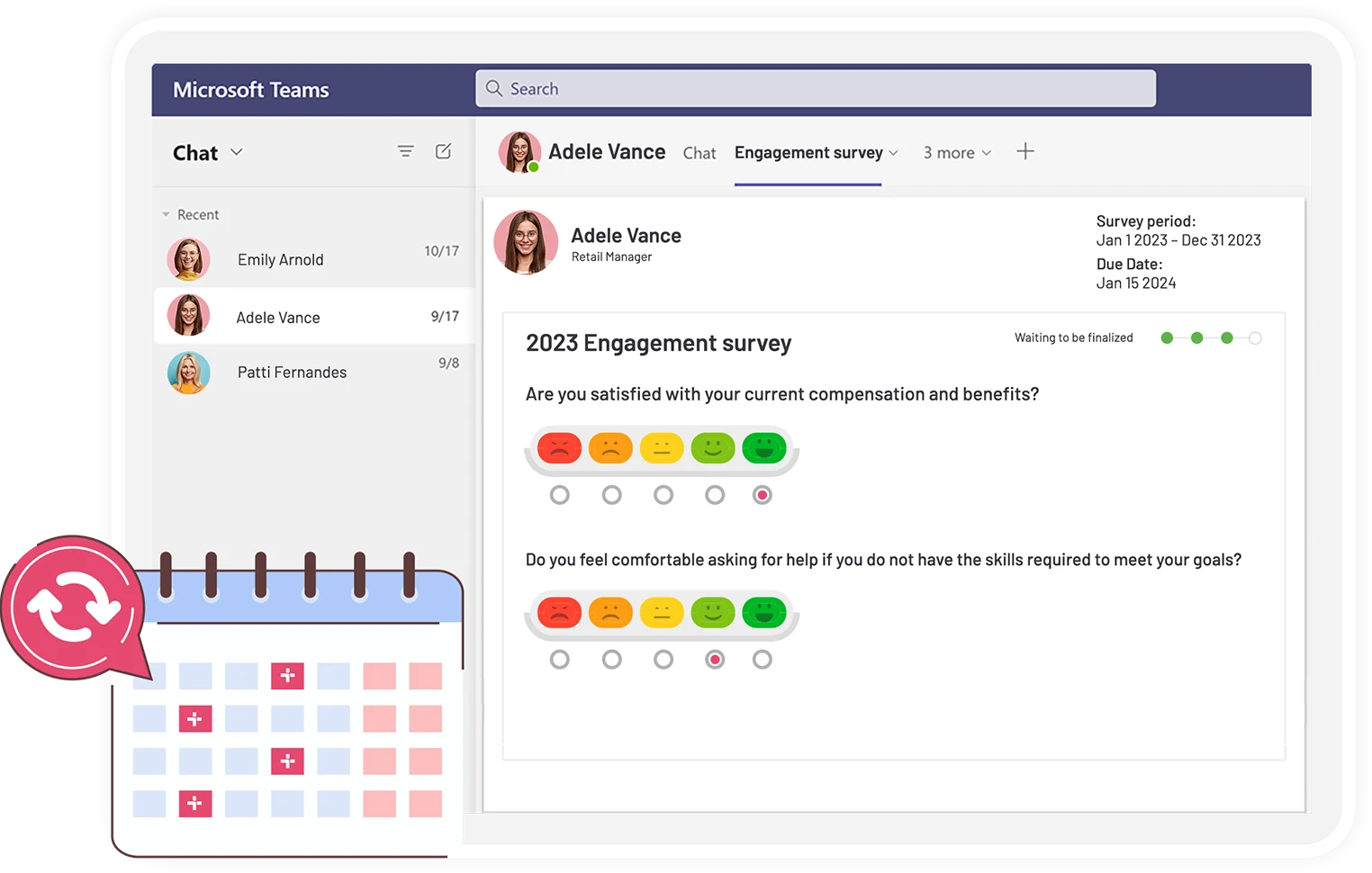Even though some of the most prominent literature on diversity management were written in the late 90s, diversity management is still as important as it has ever been; Perhaps even more so!
Creating a diverse workplace and forming diverse teams is never a bad idea. In fact, according to a 2019 study by the Network for Business Sustainability:
“Diverse firms’ productivity is 1.32 times higher than firms lacking diversity“
Turner, Fischoff: 2019
With all the proof, common sense, and simple principles of equality screaming down on us about the benefits of having a diverse and inclusive workplace, managing diversity is still a controversial topic.
With strong anti-woke sentiments spreading through the internet and people calling “forced diversity” on anything remotely diverse, the discussion of inclusivity in the workplace is one that we must keep having now, and always!
Table of Contents
What is diversity management?
The answer to the question “What is diversity management?” goes through answering an even simpler question. What is diversity? According to Lee Gardenswartz and Anita Rowe in their work Diverse Teams at Work: Capitalizing on the Power of Diversity (1998), diversity is a concept with four dimensions. The four dimensions of diversity according to Gardenswartz and Rowe are as follows:

Diversity management is the process of establishing and preserving an office environment that values and respects employee differences across the board, in all four dimensions of diversity.
While each dimension of diversity plays a key role in forming a diverse team of individuals, the bulk of the discourse surrounding inclusion and diversity in the workplace is centered around the “Internal Dimensions of Diversity”.
Key Challenges in Diversity Management

As we mentioned before at the beginning of this article, while diversity and inclusion are two concepts that almost everyone wholeheartedly agrees with, there is still an artificially created culture war that is having its flames stoked! That means, there will always be some challenges in the way of practicing diversity management in a positive way.
1. Resistance to change
One of the biggest challenges in implementing workforce diversity management practices is resistance to change. Some employees may feel uncomfortable with the idea of working with people who have different backgrounds or identities or may feel that they are being forced to change their own behavior or beliefs.
While being resistant to change is an inherently human reaction, the implications of being resistant to this form of change are a lot darker. As massive “anti-woke” sentiments keep growing, they end up hurting the chances of workplaces becoming more inclusive.
With cries of “Positive discrimination!” and “Class warfare!” echoing around in the halls of public discourse, a massive resistance to change exists as a thorn in the side of diversity management.
2. Lack of representation
A lack of representation is another key challenge in diversity management This occurs when certain groups are underrepresented in the workplace, or when there is a lack of diversity in leadership or decision-making roles.
If certain groups are already underrepresented in the workplace, then they won’t have a voice when it comes to inclusivity and diversity in the workplace.
If those very same groups don’t have a voice in diversity management, then the organization’s inclusivity and diversity strategies will be less than likely to have any plans to include those specific groups.
A workplace with little to know LGBTQI+ representation will be less likely to have strategies of inclusivity towards LGBTQI+ individuals.
3. Unconscious bias
Unconscious bias refers to the tendency to make judgments or decisions based on stereotypes or assumptions about people from different backgrounds. Each challenge mentioned in this list has a direct relationship of causality with the other.
An organization being resistant to change, results in a lack of representation for certain groups. This in turn results in unconscious biases remaining pretty much intact! Those intact unconscious biases about groups of people get in the way of effective workplace diversity management.
4. Lack of accountability
Accountability is a word that has sadly begun to lose its meaning in the past years. This is dangerous, because a lack of accountability can be a major challenge in diversity management.
When people hear the word accountability these days, their minds immediately go to massive social media “cancellations”, and “social justice warriors”.
Whatever the case is, if leaders and managers are not held accountable for promoting diversity and inclusion, it can be difficult to create a culture that values and prioritizes these goals.
Once again the correlation between one of the challenges and another is crystal clear. A lack of representation can very easily result in individuals not being held accountable for their actions.
Three Paradigms of Diversity Management
Aligning with these challenges are the paradigms of diversity management, an issue covered by Robin J. Ely and David A. Thomas in their seminal work Making Differences Matter: A New Paradigm for Managing Diversity (1996).
David A. Thomas and Robin J. Ely published their work on the paradigms of diversity management 26 years ago, yet it is still as incredibly relevant.
Since the paradigms of diversity management are a massive part of the discussion surrounding the concept of diversity management, we found it fitting to elaborate further upon them. So, what are the three paradigms of diversity management?
1. The Discrimination and Fairness Paradigm
This diversity management paradigm focuses on the necessity of combating prejudice and advancing equity at work. This, in turn, entails making sure that there is no discrimination against staff members based on their ethnicity, gender, or other traits, and that they all have equal opportunity for promotion.
Companies that adopt this paradigm may concentrate on putting anti-discrimination training, diversity hiring initiatives, and flexible work schedules into place as policies and diversity practices that support fairness and equal treatment.
(Thomas & Ely 1996: 2).
2. The Learning and Effectiveness Paradigm
The learning and effectiveness paradigm is centrally focused on how diversity enhances innovation and organizational effectiveness. What comes with this?
Appreciating how diversity can infuse the workplace with fresh ideas and viewpoints as well as actively seeking out and valuing varied viewpoints and experiences to spur innovation and enhance organizational performance.
Companies that follow this model might prioritize providing chances for workers to share knowledge, encouraging cross-functional cooperation and teamwork, and fostering experimentation and innovation.
(Thomas & Ely 1996: 3).
3. The Access and Legitimacy Paradigm
This particular paradigm for diversity management, emphasizes how important it is for businesses to value and respect employee uniqueness. Developing such a culture requires actively seeking out and valuing different viewpoints and experiences. It also implies acknowledging and respecting the diversity of its workforce.
Using this paradigm may direct organizations’ efforts toward fostering a more inclusive workplace environment, offering diversity and inclusion training and education, and actively seeking out and respecting varied viewpoints and experiences.
(Thomas & Ely 1996: 4).
Diversity Management Best Practices
1. Promote diversity in leadership
Having a diverse group of leaders is critical among the diversity best practices. You can very easily promote diversity in leadership by implementing leadership development programs, mentoring and sponsorship initiatives, and other strategies that support the career advancement of underrepresented groups.
More often than not, a diversity and inclusion best practice is nothing more than common sense and basic human decency. Having a diverse, multicultural management team is one of the best ways to ensure you have a cross-functional team at the helm.
A sad fact of today’s world is that promoting diversity and inclusion in leadership roles may come with the incredibly tone-deaf cries of “Diversity promotion!”.
In an era where people are getting mad at the skin colors of fictional characters and showing outrage over racially blind casting choices in entertainment, this is one form of criticism that managers have to nip in the bud.
At the end of the day, if your boardroom looks like a scary country club, that means you missed a couple of steps along the way!
2. Encourage everyone to share their story
Encouraging employees to share their personal experiences and perspectives is one of the great diversity and inclusion best practices.
It is a brilliant way to celebrate diversity and can be achieved through storytelling events, employee resource groups, and other initiatives that create opportunities for employees to connect and learn from one another.
Forming a diverse team is only half the battle having that diverse team interact and bond with each other, and celebrate the inclusive and diverse environment they’ve created together is an incredible way to boost employee engagement.
It is far easier to get someone invested in people than in organizations. If your team is invested in each other, there isn’t much that can stand in their way.
3. Diversity and inclusion training
Providing regular diversity and inclusion training to employees at all levels of the organization is an essential diversity management best practice. Some diversity and inclusion training topics may include subjects such as unconscious bias, cultural sensitivity, and inclusive communication.
Increasing awareness and understanding of these issues, results in employees being better equipped to create a more inclusive workplace culture.
4. Foster a culture of inclusivity
Creating a culture of inclusivity in your workplace isn’t just about being welcoming. It is about not leaving anyone behind. Workplace culture has a tendency of moving very fast and evolving constantly.
While that is usually positive, it does come with a risk of some members of the team being left behind. Promoting a culture of inclusivity means fostering workplace creativity; It means fostering a culture of empowerment.
Fostering a culture of inclusivity is one of the excellent inclusion best practices, and it normally comes with setting expectations for behavior and addressing any instances of discrimination or harassment quickly and effectively.
5. Build a Diverse Workforce
Building a diverse workforce is all about altering your recruitment and hiring policies and mapping them around the internal dimensions of diversity. The best place to start is with job descriptions.
This involves reviewing job descriptions and ensuring that they do not include any discriminatory language or requirements that could exclude certain groups of candidates.
A diverse workforce can help organizations attract and retain top talent, as individuals are more likely to join and remain with organizations that value diversity and offer equal opportunities. Remember:
76 percent of job seekers name diversity as an important factor when evaluating an employer
How to Measure Diversity and Inclusion Initiatives?
Measuring the success of diversity and inclusion initiatives isn’t any different than measuring the success of other HR initiatives. The answer lies in checking in with your employees. Conducting regular employee pulse surveys and analyzing their results is a great way to gauge the effectiveness of your diversity and inclusion initiatives.
In fact, if you’re in the market for a survey tool, you might want to take a look at this nifty list: 10 Best Employee Pulse Survey Tools

If you are a regular user of Microsoft Teams, then the best option out there for you is Teamflect. Teamflect is an all-in-one performance management software designed specifically for Microsoft Teams.
It also happens to be one of the best employee engagement survey tools out there today. Without ever having to leave Microsoft Teams, you can conduct entire employee pulse surveys and customize their pulse survey questions to your liking.
Teamflect is so much more than just a survey tool. It is also the perfect platform for you to set tasks, create goals, conduct performance reviews using Teamflect’s customizable performance review templates, and so much more.
The best part is, you can try Teamflect out for free! Teamflect’s free plan includes up to 10 users, has full functionality, and has no time limits! That means you can demo Teamflect with one department, and decide whether it is the right fit for you based on their feedback!



